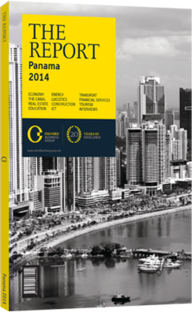OBG talks to Pedro Heilbron, CEO, Copa Airlines

Interview: Pedro Heilbron
How will the expansion of Tocumen International Airport impact the wider transport sector?
PEDRO HEILBRON: The new South Terminal, which will add 20 new gates, will allow the Panama aviation industry to continue taking advantage of growth opportunities. The South Terminal expansion is a three- to four-year project that is going faster than originally planned. Of course, the new 20 gates will need to be well integrated with the 34 gates of the current terminal to work as one efficient hub, thereby allowing Panama to remain the most connected country on the continent.
Is the domestic short-haul flight niche threatened by rail and road modernisation?
HEILBRON: Distances in Latin America are quite long, and in any case better roads and trains are not imminent. All transport services benefit from improved road and train services, even airlines. The presence of the canal and competitive ports opens great opportunities for Panama. However, Customs bureaucracy is still slow, and crossing borders in Central America takes time. For me, this is the main problem limiting export and import growth. With improved Customs services, Central America would benefit as long as roads in the region are acceptable. They could export at lower costs thanks to Panama’s good logistics services.
What needs to be done to further aviation growth in Latin America, and what kind of advantages does Panama have in this regard?
HEILBRON: Our region has never enjoyed better connectivity. For aviation to continue growing, there needs to be additional and better focused investments in airports and air navigation infrastructure. More than 15 major airports in Latin America are congested. Also, aviation costs and taxes are usually higher in our region, which affects airline efficiency, competitiveness and growth. Luckily, Panama still has an advantage over competing hubs, with better infrastructure, competitive costs and an aviation-friendly business environment.
Sometimes demand for domestic flights exceeds supply. Is there a market to tap here?
HEILBRON: Domestic distances in Panama are short and highways have improved. We do not see the domestic market as a priority. However, the Río Hato Airport has a bright future. The potential of the surrounding areas is due to the considerable investment going into beach resorts. With the construction of new hotels and resorts, direct flights will be justified to Río Hato.
The area has a remarkable tourist interest, not only because of its beaches but also due to natural parks, mountains and traditional towns.
Is there room for regional low-cost carriers (LCCs)?
HEILBRON: There is space in the market for all types of airlines. LCCs have a strong presence in Brazil, Mexico and Colombia. The LCC business is based on having full and frequent flights. Copa Airlines’ business is based on uniting various low-passenger-volume markets. In a hub like Panama, we can make those flights not only viable but profitable. We currently fly to 66 cities with several frequencies between them, and our Panama hub combines both big and small markets.
Those markets, however, remain far too small in size for the LCC business model, which tends to be more appropriate for larger international cities. Indeed, most markets in Latin America are still too small for frequent direct LCC flights, and airport fees and taxes are in most cases relatively high, making it difficult to stimulate demand through lower costs and pricing.
How do staff shortages affect industry growth?
HEILBRON: The shortage of qualified workers is currently the most pressing challenge to the success of industry in Panama. Most of the bigger companies, including Copa Airlines, have fortunately been able to find sufficient staff in continuing their expansion plans.
However, bigger investments in recruiting processes, training courses and retaining staff have limited returns for most of the businesses in the sector concerned.
You have reached the limit of premium articles you can view for free.
Choose from the options below to purchase print or digital editions of our Reports. You can also purchase a website subscription giving you unlimited access to all of our Reports online for 12 months.
If you have already purchased this Report or have a website subscription, please login to continue.

